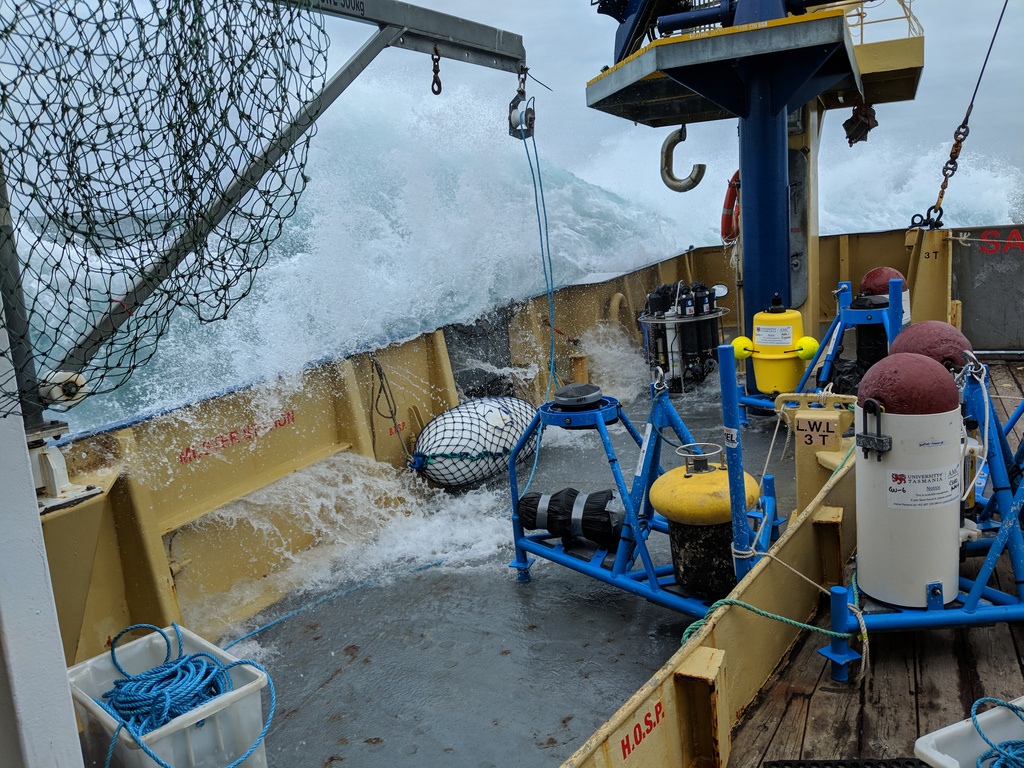A new currents, waves and CTD dataset for Banks Strait (Tas) and Clarence Strait (NT) is now available via the AODN Portal.
The Australian Tidal Energy (AUSTEn) team is pleased to make the currents, waves and CTD data, obtained during the campaigns in Banks Strait, Tasmania and Clarence Strait, Northern Territory, publicly available through the AODN Portal.
It is available for researchers and industries alike to further investigate the energy resource potential of these sites and/or validate their ocean and hydrodynamic models.
The AUSTEn project was initiated in 2017 and completed in September 2020. The project was co-funded by the Australian Renewable Energy National Agency (ARENA) to assess the technical and economic feasibility of tidal energy sites in Australia. This project was led by the Australian Maritime College, University of Tasmania in partnership with CSIRO and the University of Queensland, industry partners SIMEC Atlantis Energy (Scotland), Sabella (France) and Mako Tidal turbines (Australia), and international collaborators, Acadia University (Canada) and Bangor University (United Kingdom).
The outcomes of this project are highly beneficial to the emerging tidal energy industry, the strategic-level decision makers of the Australian energy sector, and the management of Australian marine resources by helping them to understand the resource, risks and opportunities available, and overcoming current barriers to investment by increasing the competitiveness of tidal energy against other forms of ocean renewables.
Detailed field and numerical studies for the two sites have been delivered, providing tidal project developers a head start in commissioning their site prior to deployment of their technology. Further case studies were developed showing the potential of tidal energy in Australia’s energy mix.
This Australian first project successfully developed the following inter-linked deliverables:
- A National Australian high-resolution tidal resource assessment (~500 m resolution), feeding into the Australian Renewable Energy Mapping Infrastructure (online resource atlas).
- Focused case studies at the Banks Strait, Tasmania, and the Clarence Strait, Northern Territory for energy extraction, involving field based and high-resolution numerical site assessments, as well as in-situ environmental measurements and observations.
- Technological and economic feasibility assessment for tidal energy integration to Australia’s electricity infrastructure, including consideration of important issues such as grid integration, and competitiveness against existing and new sources of generation, intermittency and farm design. Case studies at six key sites also outlined opportunities for adding tidal generation to the energy mix.
Data Links and further information:
- The final report of the project will be available on the ARENA portal.
- The AUSTEn National Tidal Model hourly tidal elevation and velocity outputs are made openly available via CSIRO’s Data Access Portal.
- Tidal energy resource layers from both the AUSTEn National Tidal Model and the high-resolution Banks Strait, Tasmania and Clarence Strait, Northern Territory models are available via the Australian Marine Energy Atlas on the Australian Renewable Energy Mapping Infrastructure (AREMI) website.
- The bathymetric surveys will be available from Geoscience Australia’s AusSeaBed database to improve the national bathymetry dataset.
- Finally, research from this project has also been presented and published both nationally and internationally to highlight the emerging Australian tidal energy sector.
Thank you to Emma Flukes of the Institute for Marine and Antarctic Studies (IMAS) who was also involved in this collaboration. She provided assistance in publishing NetCDF files on the IMAS Thredds catalogue and in creating metadata records with required online services to ensure the data is readily available through the AODN Portal.
Also, thanks to Camille Couzi (Field Engineer with AUSTEn), who processed all the data using the IMOS Toolbox converting to netCDF format and ensuring consistency with other already available moorings data.
This news item was written in collaboration with AUSTEn staff.
If you have any questions, please contact the Project Researcher, Dr Jean-Roch Nader ([email protected]) Australian Maritime College (AMC) at the University of Tasmania. Feedback on the AODN Portal or product are always welcome please send them to info(at)aodn.org.au.
